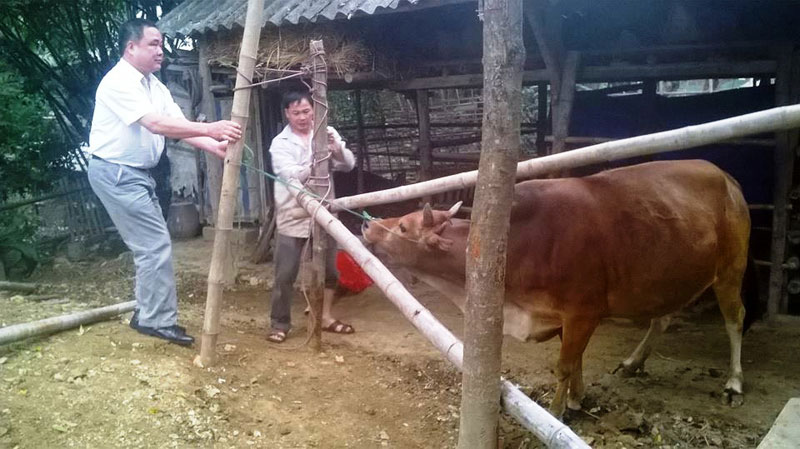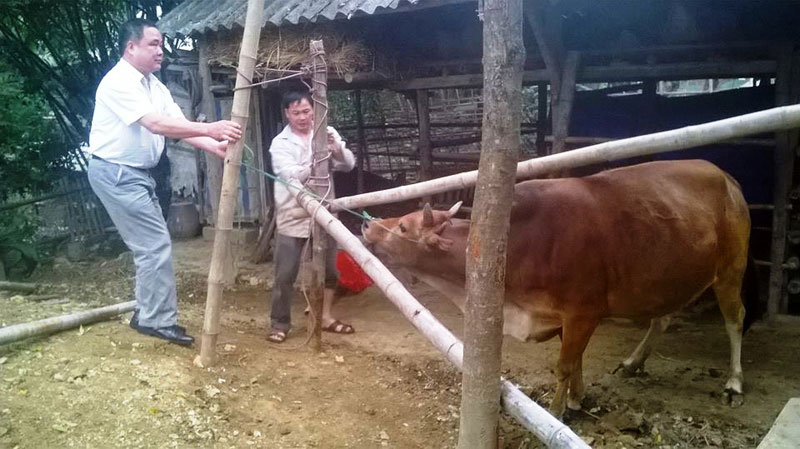


By the end of November 2018, there were
13,709 cows, 6,502 buffaloes, 3,689 goats, 25,250 pigs and 232,744 poultry.
From the beginning of this winter, the district has issued directives and
dispatches on how to prevent the plants and animals in the area from hunger,
coldness and diseases. The Department of Agriculture and Rural Development has
increasingly sent their staff to the communes and villages to propagandize and
guide the people there to take measures and protect their herds in the winter. At the same time, the district has also set
up working teams to inspect and direct the prevention of hunger, coldness and
disease for the herds in communes and towns in the district.

People in Da Do hamlet, Tan Dan commune (Mai
Chau) has brought the cattle to raise in the captive state and ensure the
measures, preventing them from the coldness.
In order to hold the initiative in the
disease prevention and control for animals, the District's Animal Husbandry and
Veterinary Station has deployed 5 spraying sessions to prevent and control
animal diseases in 23 communes and townships with 2,487 liters of used drugs.
The area sprayed is 3,848 m2, in which the spraying disinfection and periodic
detoxification is 3 times with 1,587 liters of drugs and 100 liters of drugs
for the spray disinfection; the total environmental spraying disinfection after
the flood is 800 liters of drugs in the district. Together with that, the
district has also been directing the communes and towns to regularly update the
weather and climate changes, especially the deep and heavy coldness to timely
inform the people. When the temperature outside is under 100C cattle must be
locked in the cages, absolutely not leaving them in the field. It is necessary
to supply food for cattle and give warm water. Do not let buffalos and cows plow. When the low
temperature is prolonging, the sacks and old blankets for buffalos and cows
should be used.
In recent years, thanks to the initiative in
preventing and fighting the coldness, the awareness of the people in the
prevention of hunger and coldness for cattle has been raised noticeably. Most
of the households have built stable animal lodging with careful screening and keeping warm
litter for the herds. They have also been preserving dry food, ensuring the
source of food for the animals when the weather is in bad conditions.